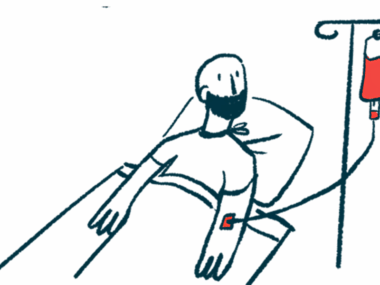1st Participant Dosed in Phase 1/2a Trial Testing Potential MG Therapy NMD670
Written by |

The first participant has been dosed in a Phase 1/2a trial evaluating NMD670, NMD Pharma‘s investigational therapy for myasthenia gravis (MG).
“I am pleased to announce that our lead program has entered the clinic. NMD670 has already shown great promise in preclinical studies and we hope that these positive results will be replicated in humans,” Thomas Holm Pedersen, CEO of NMD Pharma, said in a press release.
NMD670 is an oral compound designed to inhibit a muscle-specific chloride ion channel found in skeletal muscles — those responsible for voluntary movements — called ClC-1.
Muscles rely on two types of electrical currents to work: those that excite the muscle, spurring it to contract, and those that inhibit muscle contraction. In MG, the production of autoantibodies against acetylcholine receptors (AChRs) reduces excitatory currents, while inhibitory currents traveling through ClC-1 counteract the communication between nerve endings and muscles at neuromuscular junctions. The result is an impairment in muscle function and muscle weakness.
Because it conducts inhibitory currents, limiting ClC-1’s effect might strengthen neuromuscular communication by restoring the balance between electrical signals, leading to improved skeletal muscle function. Past research supports this hypothesis.
The randomized trial (CHDR1948), which was approved earlier this year, is taking place at the Centre for Human Drug Research (CHDR) in Leiden, Netherlands.
It will assess the safety and tolerability of multiple doses of NMD670 in 79 participants, including healthy male and female volunteers, and patients with generalized MG. It will also evaluate the compound’s pharmacokinetics, or its movement into, through, and out of the body, and pharmacodynamics, which refers to the effects of a medicine on the body.
Participants will be randomly assigned to receive either single or repeated (increasing) doses of NMD670, or a placebo.
Among other eligibility criteria, participants with MG must have anti-AChR-autoantibodies — the most common in people with the generalized form of MG — and muscle weakness from class II to IVa, according to the Myasthenia Gravis Foundation of America scale. Patients using steroids should be on a stable dose for one month or more before screening.
Trial completion is expected in December 2021, and the company anticipates reviewing top-line data sometime next year, according to Pedersen.
“Patients with myasthenia gravis suffer from muscle weakness which severely affects their quality of life. Current treatment options for this autoimmune condition are far from optimal so there is a great need to develop and evaluate new therapeutics such as NMD670,” said Geert Jan Groeneveld, PhD, CHDR’s chief scientific and chief medical officer, and the trial’s principal investigator.






Leave a comment
Fill in the required fields to post. Your email address will not be published.